toy hovercraft
This is a toy hovercraft

The skirt must assume a doughnut shape or friction is too great. Use a flimsy swing-bin liner or clingfilm, thicker polythene doesn't form an effective seal because it doesn't conform to the inequalities in the surface it's running over.
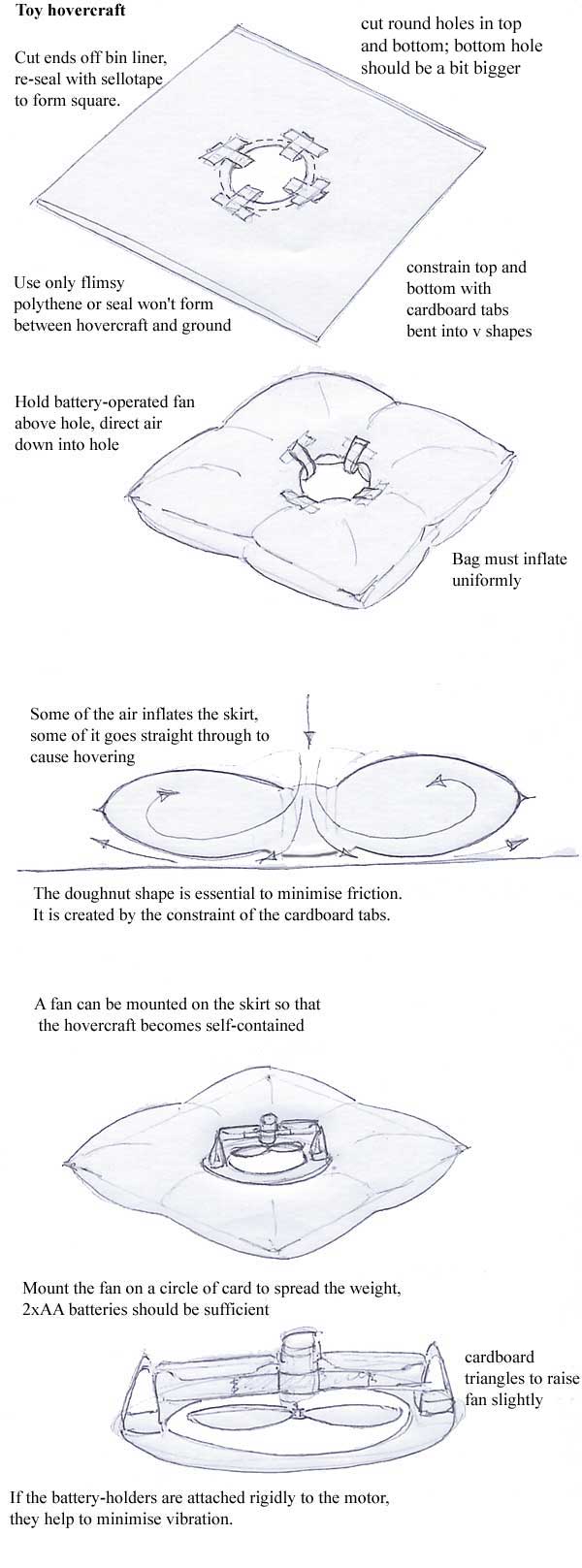
This is a very small version of the same thing
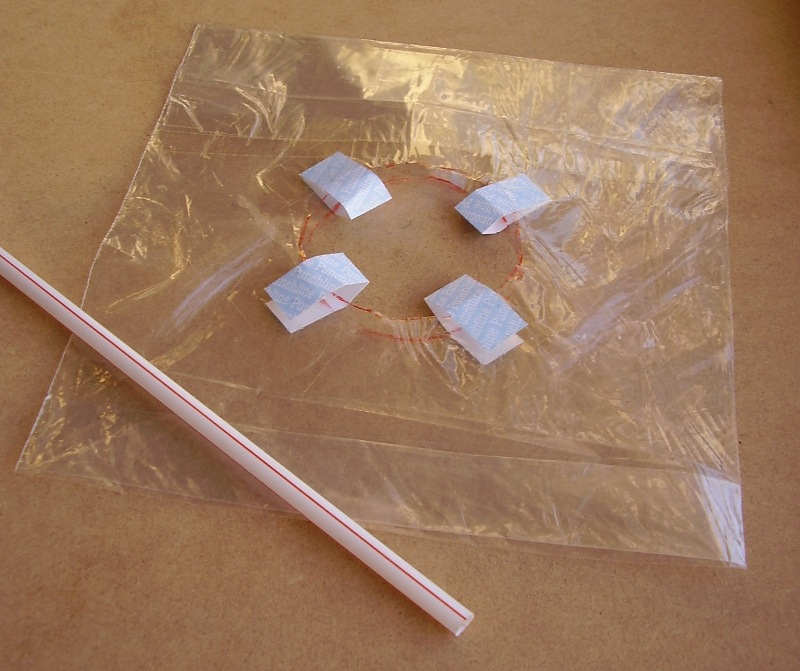
You work it by blowing at it through the straw
movie
This one uses 4 AAA batteries and a geared fan. And a defunct motor.

Understanding skirts opens the door to ceiling robots (travel on ceiling by sucking not blowing).

They can also go on walls but this is trickier because of the uphill problem.

This is a diagram of how to make a hand-over-hand wall climbing robot. They are easier than the wheeled variety. You have to make a push-pull mechanism using fishing line which winds/unwinds round a motorised shaft. One end of the dowel is rigidly attached to one of the plates (it is held by a drinking straw); the other end passes through a drinking straw which acts as a slider. By switching the fans on and off alternately and working the slider the robot can be made to climb a wall.
It is surprisingly tricky getting the wind/unwind idea to work.
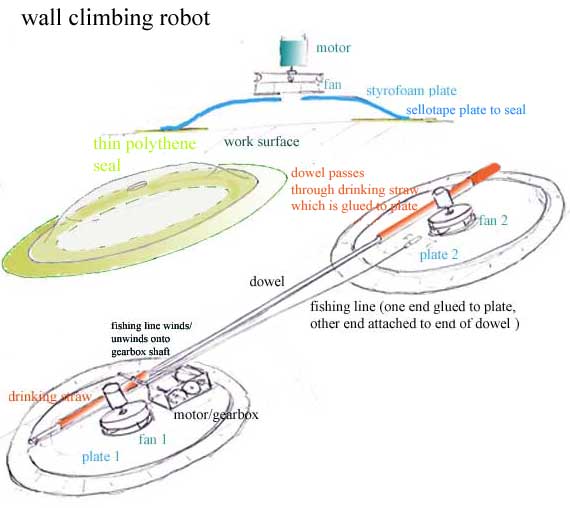
For better grip on smooth walls add a bead of rubber band immediately under the plate rims. Attach to the polythene with double-sided tape.
Not too good on ceilings because of the leverage effect of the dowel. Don't switch the 'off' fan off completely, just enough for it to let go a bit.
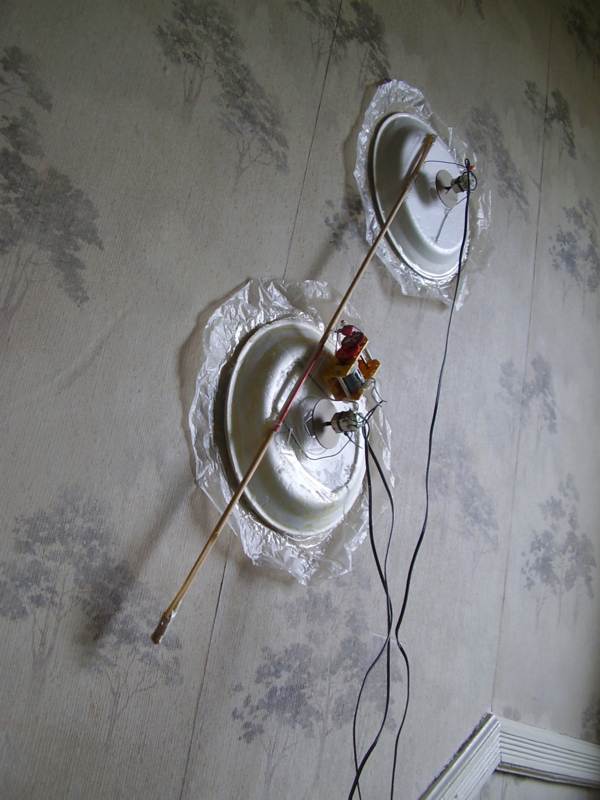
The centrifugal fan is made by sticking a 2 inch disc cut from a scouring pad to a motorised cardboard wheel.
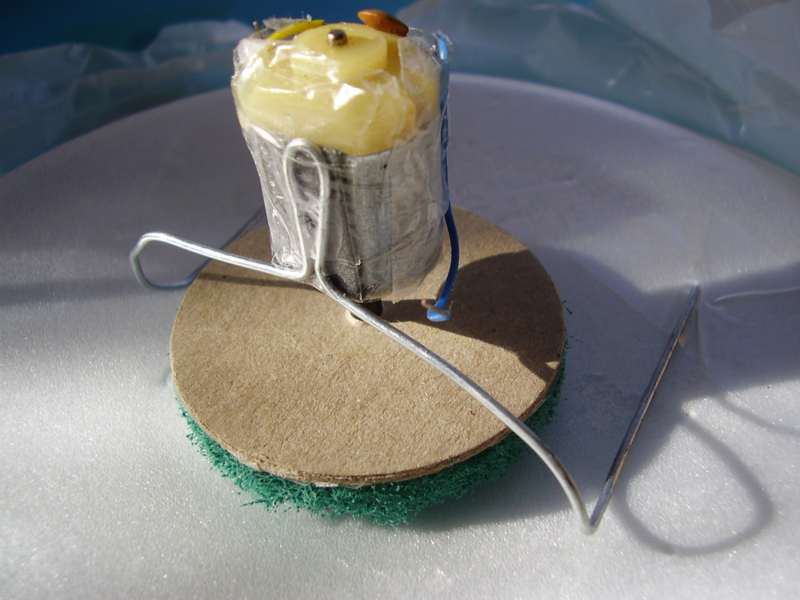
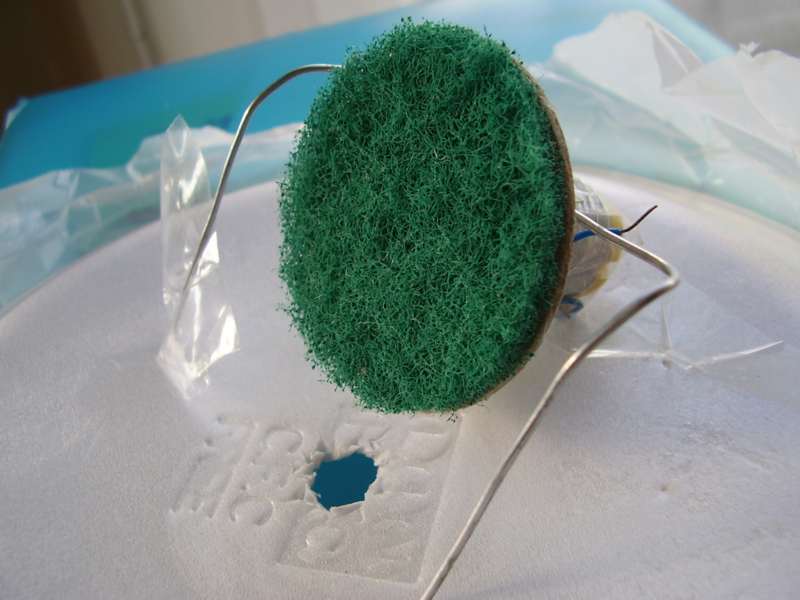
Try just holding the fan above a styrofoam plate with a half-inch hole in the middle on a smooth work surface. Even without the polythene skirt the grip is quite surprising, even when the fan is running on 3 volts.
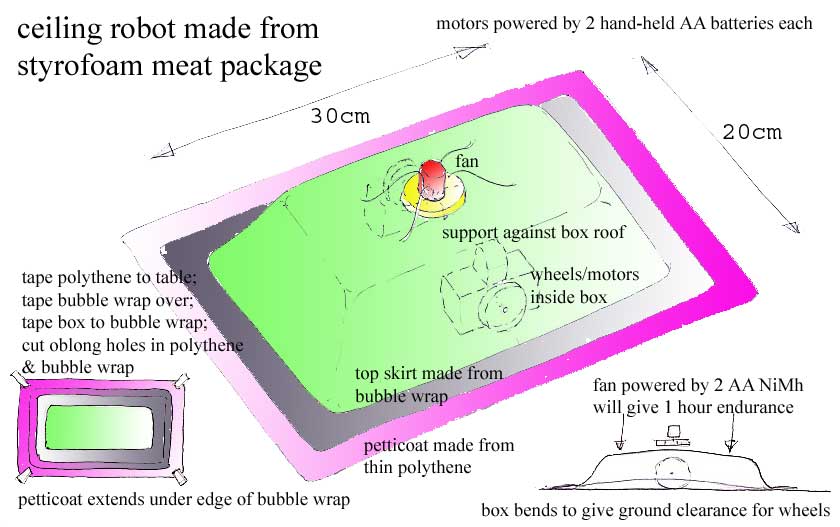
This is a wheeled ceiling robot. The problem with these is that you have to create a seal which can slide easily. The partial vacuum must provide enough down force to give the wheels traction and yet not create too much friction in the seal. This apparent paradox can be reconciled by making a skirt out of bubble-wrap.
Bubble wrap is stiff enough not to ruck up under the box and yet flexible enough to create a continuous seal; also the vacuum can to some extent spread between the bubbles. For this reason the edge of the bubble wrap must have an additional skirt (the petticoat) made of very flimsy polythene to seal the outer edge. This should extend for about 2cm under the edge of the bubble wrap because an inner seal is constrained in such a way that it remains smooth. The polythene is only taped to the bubble wrap along the edge of the bubble wrap. The inner edge of the bubble wrap is taped to the styrofoam box.
The skirts/box should be taped together on a flat work surface. Do this first. Tape the corners of the polythene to keep everything flat. When you've finished, remove from work surface, cut inner hole in polythene and trim inner edge of bubble wrap to conform to the edge of the box. If you've got it right, even at this stage it should show an amazing tendency to cling to smooth surfaces and the seal should be quite reluctant to break.
The ground clearance of the wheels is quite critical, I find about 3mm works best. Start with a very small ground clearance then superglue more and more rubber bands to the wheels: this increases the ground clearance incrementally and improves the grip of the wheels.
This is another round one with external motors. Having them outside the box makes them less noisy

link to movie
link to another movie of wall/ceiling robot
much simpler ceiling robots; don't work on walls
someone should use this as the basis for a graffiti robot
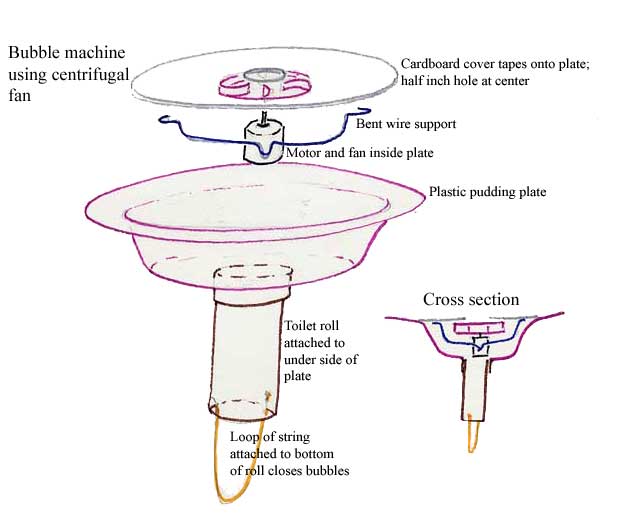
This is a simple bubble machine which uses the same centrifugal fan, in this case it blows rather than sucks. Use 1.5 volts. Dip toilet roll in washing up liquid solution with fan off, remove and switch fan on.
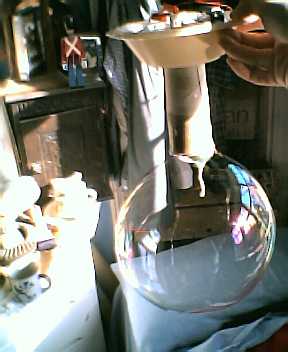
You can just see the string trying to close the bubble.

This shows the fan inside the machine.
This is a balloon powered hovercraft
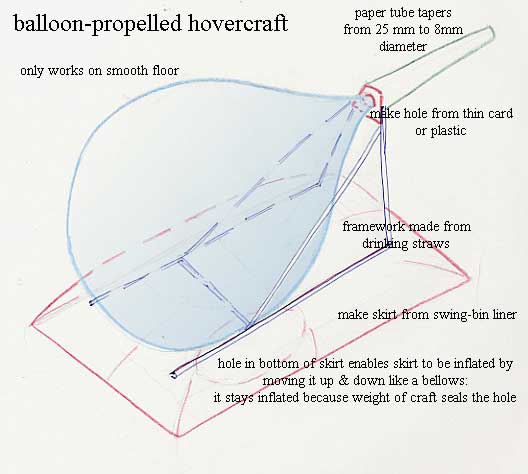
it works quite well and seems to beg the question 'do hovercraft work by hovering or by distributing their weight very evenly?'
The air remains trapped in the skirt for a surprisingly long time. Real hovercraft sometimes have valves which dump the air out of the skirt otherwise it's impossible to park them on sloping concrete slipways.
link to interesting site
wikipedia on hovercraft
read about the avrocar
good site for motors etc
back to main site
my email is davidvwilliamson@hotmail.com















